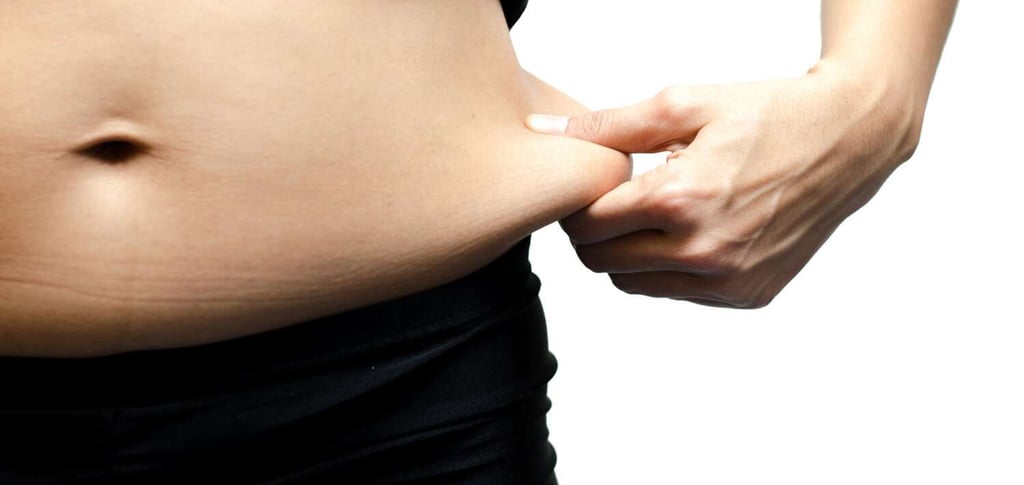What if visceral fat doesn't come from our diet (but from stress)?
Tired of that spare tire around your waist that refuses to disappear despite your dietary efforts? What if we told you that visceral fat, that deep fat lodged around the organs, was more related to stress than to your diet? 😱 Get ready to discover a new perspective on this stubborn problem and finally understand how to get rid of it for good.
HEALTHBLOG-LIST
1/4/20253 min read


Summary
Visceral Fat: The Hidden Danger
Stress, Public Enemy #1 of Your Flat Stomach
How Does Stress Promote the Storage of Visceral Fat?
Decrypting Stress Hormones
Diet and Visceral Fat: The Infernal Duo
Concrete Solutions for a Flatter Stomach and Better Health
FAQ
Conclusion
In short
Visceral fat is dangerous for your health.
Chronic stress is a major factor in its accumulation.
Cortisol, the stress hormone, plays a key role in this process.
Diet also plays a role, but stress can amplify its negative impact.
Adopting a holistic approach including stress management is essential to get rid of visceral fat.
1. Visceral Fat: The Hidden Danger
We talk a lot about subcutaneous fat, the kind you can pinch, but visceral fat is much more insidious. Invisible to the naked eye, it accumulates around the vital organs of the abdomen (liver, intestines, stomach).
Why is it so dangerous? Because it promotes:
Cardiovascular disease
Type 2 diabetes
Certain cancers
Insulin resistance
Chronic inflammation
It is therefore crucial to get rid of it to preserve your health.
2. Stress, public enemy #1 of your flat stomach
Chronic stress, this scourge of the modern world, is much more than just a temporary nuisance. It deeply impacts our body, and especially our figure. Many scientific studies have demonstrated the direct link between high stress levels and the accumulation of visceral fat.
But how can stress make us fat, and more specifically in the belly?
3. How does stress promote the storage of visceral fat?
When we are stressed, our body triggers a cascade of physiological reactions. One of them is the production of cortisol, the stress hormone.
Cortisol has many effects on our body, including promoting fat storage, especially in the abdominal area.
In addition, stress can disrupt our sleep, increase our cravings for "comfort food" and demotivate us from exercising, all factors that contribute to weight gain and the accumulation of visceral fat.
4. Decrypting stress hormones
Cortisol is not the only culprit. Other hormones, such as adrenaline and noradrenaline, also play a role in stress-related weight gain.
These hormones increase the production of glucose by the liver, which can lead to insulin resistance and the accumulation of visceral fat if this glucose is not used by the body (for example, during physical activity).
5. Diet and visceral fat: the infernal duo
Beware, this does not mean that diet does not matter! A diet high in refined sugars, saturated fat and processed foods also promotes the storage of visceral fat.
But stress can amplify the negative impact of a poor diet. Indeed, cortisol increases appetite and sugar cravings, which can lead us to make poor food choices.
6. Concrete solutions for a flatter stomach and better health people practicing relaxing activities: yoga, meditation, walking in nature
The good news is that it is possible to reverse the trend! Here are some tips to reduce your stress and thus decrease your visceral fat:
Practice relaxation techniques: yoga, meditation, deep breathing, sophrology...
Exercise regularly: physical activity is an excellent stress reliever and helps burn calories.
Get enough sleep: lack of sleep increases cortisol levels.
Adopt a healthy and balanced diet: favor fruits, vegetables, lean protein and whole grains.
Limit your alcohol and caffeine intake: these substances can worsen stress.
Learn to manage your emotions: identify sources of stress and find solutions to manage them effectively.
7. FAQ
Q: Is visceral fat the same as cellulite?
A: No, cellulite is a form of subcutaneous fat, visible on the surface of the skin. Visceral fat is deeper and surrounds the organs.
Q: How do I know if I have too much visceral fat?
A: A waist circumference greater than 31.5 inches for women and 37 inches for men is an indicator of risk. Your doctor can also prescribe additional tests (CT scan, MRI) to measure your visceral fat levels.
Q: Is it possible to lose only visceral fat?
A: No, you cannot target fat loss on a specific area. Weight loss is global, but by adopting the right habits, you will lose visceral fat more easily.
8. Conclusion
Visceral fat is a real health hazard, but it is possible to get rid of it by adopting a holistic approach that takes into account the importance of stress management. Remember that your mental well-being is just as important as your physical well-being.
And you, what are your tips for managing stress and staying in shape? Share your experiences and advice in the comments! 👇
